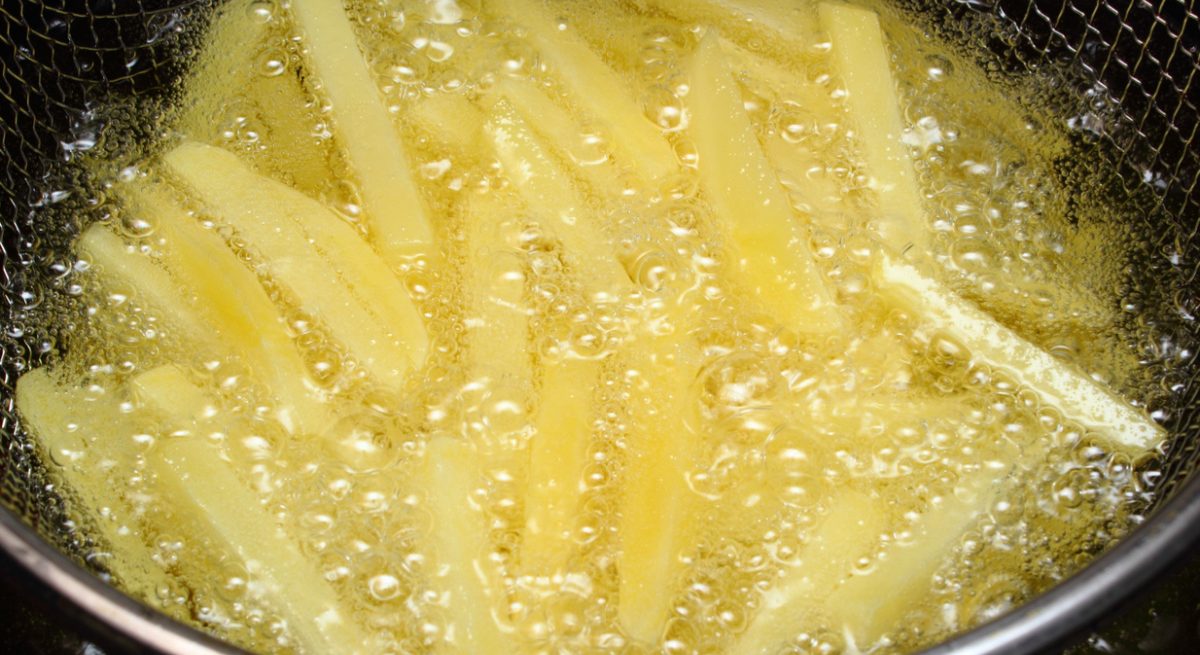Best Practices for Cooking Oil Maintenance
4 Min Read By Brian Rippee
Cooking oil prices are skyrocketing. Here's how to make your oil last longer without serving soggy frie
As the demand for petroleum alternatives like biofuel intensifies, so does demand for the ingredients that make this fuel – most notably, the price of used cooking oil. If you are a restaurant owner or manager, you may have noticed the price of frying oil skyrocketing over the last year. In fact, has gone up close to 70 percent since January of 2020.
Even after your restaurant fryer oil is spent, it still has value. Again, used cooking oil is what is driving this boom. Some are even referring to it as liquid gold, which sounds nice, but for restaurants, that means an increased prevalence of theft. Grease theft is on the rise as well, and while that may not that may not seem like a serious crime, it’s an eight-figure black market that is making thieves rich. Some are making as much as $1,500 per day off stolen oil. This also means potential property damage and increased risk to restaurant employees.
All of this has quickly put a dent in many restaurants’ bottom line as cooking oil can comprise a large portion of a kitchen’s food related costs if it does a lot of frying. It has led to kitchens extending oil beyond its reasonable frying life which is adversely affecting the taste of their food. It’s left kitchens in quite the predicament: sacrifice the taste of its food or continue to tear through jugs of at a premium price by frequently changing fryer oil?
No one wants soggy fries, and we are here to help. These simple tips will extend the life of your frying oil without it affecting the taste and quality of your food.
The four things that cause restaurant oil to break down
In order to find safe ways to extend fryer oil life, It’s important to understand what makes oil go bad. There are four things that cause it to break down: heat, air, moisture and light. Some of this is inevitable. While frying, food releases moisture which contains oxygen. When oil comes in contact with moisture and oxygen, it oxidizes – or breaks down — faster. It’s a natural byproduct of the frying process. Solid food particles and other debris also make oil less fresh.
Properly Handle Fryer Oil
1. Regularly filter it
Filtration rids your already used oil of solid food particles and other debris that has gotten mixed in. Some fryers have built-in filtration systems. If yours does not, it will need to be done manually through a strainer or a portable filter machine. It’s a necessary process that will save you money on oil costs in the long run.
2. Don’t overfill when changing fryer oil
When changing a batch of frying oil, make sure you don’t overfill it beyond the recommended amount. It should be marked on the fryer. It is a wasteful, inefficient use of that pricey oil you are trying to conserve because a higher oil level means that batch will take longer to reach proper frying temperature, it also increases the risk of an overflow or spill. Make sure you are pouring just the right amount to properly conserve your oil.
3. Train your staff to regularly skim cooking oil
Get your staff in the habit of skimming the tops and sides of your fryer once or twice every hour. It will get rid of errant food particles on the sides of the fryer which keeps the oil clean and consistent for longer, extending its frying life.
4. Know your oil’s smoke point
Remember that desired temperature we referenced earlier? Different types of cooking oil have different smoke points, which is the temperature at which it breaks down. The further oil goes beyond its smoke point temperature, the quicker it goes bad. Make sure you know your oil’s smoke point so you aren’t needlessly rifling through batches due to exceeding its temperature threshold.
Proper Fryer Vat Management
The vat is where your oil lives within your fryer. Making sure the vat is managed efficiently can have a positive effect on the life of your fryer oil.
1. Use vat covers between frying cycles
Remember those four components that cause oil to break down? It wouldn’t make sense to leave the oil unnecessarily exposed to them, right? Cover the fryer vats between frying cycles. It will limit the number of food-related particles and other debris from mixing into the batch. It also reduces the oil’s exposure to oxygen, moisture and light, which expedite the oxidation process.
2. Make a habit of turning the vats off
Turning the vats off when you aren’t frying will conserve energy as well as preserve oil quality because the oil isn’t heated when it is not needed.
3. Season fried food on the side, not over the vat
When you pull a fresh batch of French fries or chicken tenders out of your fryer basket, it may be tempting to go ahead and salt and season it right there on the spot. Don’t do this. Salt causes oil to break down faster, and the more solid debris in the oil, the quicker it goes bad. Put the food on a plate and season it elsewhere to preserve oil quality.
Don’t Overdo it
These practices will most certainly help extend the life of your oil. But don’t let the skyrocketing price of cooking oil tempt you to stretch it too far. There is a sweet spot when it comes to preserving oil quality and your kitchen’s goal should be to extend that sweet spot rather than simply trying to use a batch for as long as possible. Once oil is spent, continuing to fry with it will have a negative effect on the taste, smell and texture of your food.
How do you know when your oil is going bad? Here’s a guide.
The price of fryer oil is expected to continue to rise in 2022. Being prepared with proactive measures to extend the frying life of your cooking oil help you cut costs and improve your bottom line.


